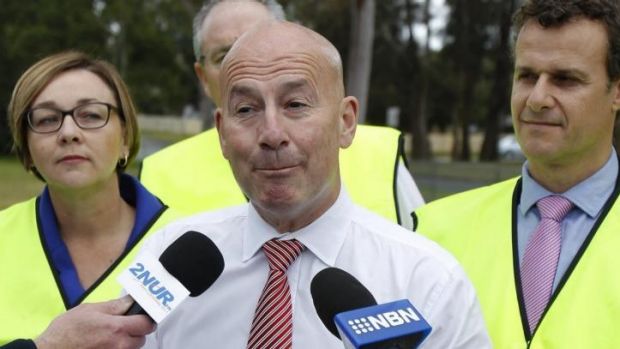EXCLUSIVE
An extra 500,000 people a year would choke NSW emergency departments at a cost of $80 million if the federal government proceeds with its GP co-payment, internal health department documents show.
 John Robertson says the GP co-payment will “smash the health system”. Photo: Max Mason
John Robertson says the GP co-payment will “smash the health system”. Photo: Max Mason
The analysis by NSW Health has been backed by doctors and health groups who say a $7 Medicare fee for GP visits would be a disaster for the state’s health system, blowing out emergency department waiting times and hurting society’s sickest and poorest.
Scenarios prepared for the NSW government in May, obtained by NSW Labor, assumed a $6 co-payment, lower than the $7 fee later proposed by the federal government.
It found a potential increase in emergency department attendances “in the vicinity of 500,000”, leading to increased costs of about $80 million a year.
There were 2.6 million presentations to NSW emergency departments in 2012-13; that figure would have jumped by 27 per cent under a $6 co-payment, the analysis found.
NSW Opposition Leader John Robertson said the figures showed the co-payment would “smash the health system” and hurt families.
“Thousands of people will be forced to turn up in emergency departments to avoid paying the fee to their local GP,” he said.
NSW opposition health spokesman Walt Secord said it was time the state government “stopped defending their federal counterparts and stood up to Tony Abbott and his GP tax”.
Following the budget in May, NSW Premier Mike Baird expressed concern about the $7 payment to visit a GP, saying “if it leads to long queues in emergency departments, well, that’s not something that’s sustainable”.
The co-payment is among a host of budget measures whose passage through the Senate has been delayed due to a lack of support from Labor, the Greens and the Palmer United Party.
Prime Minister Tony Abbott has previously signalled a compromise deal could be offered to ease the burden on pensioners.
The government says $5 of the $7 co-payment will go towards establishing a $20 billion Medical Research Future Fund. Health Minister Peter Dutton has said the government will push through a smaller version of the fund if the GP co-payment fails.
Australian Medical Association Federal President Brian Owler said hospitals have worked hard to improve emergency department waiting times.
“Putting another 500,000 people into that system is going to mean all of those gains are going to be lost, and we are probably going to end up in a worse position than when we started,” he said.
Dr Owler said the policy was “driven by a fiscal and economic outlook, there is no consideration of … the health care needs of the Australian community.”
The Consumers Health Forum of Australia chief executive Adam Stankevicius said the findings “show what a disaster the co-payment would be for primary health care in Australia, pushing so many patients toward belated emergency treatment”.
NSW Health Minister Jillian Skinner said the “rudimentary scenarios” for a GP co-payment were developed after the National Commission of Audit proposed the measure.
Ms Skinner said she had written to Mr Dutton regarding the policy, but she did not detail what was said.
A spokesman for Mr Dutton said his government had given states the option of charging co-payments at emergency departments for GP-type presentations. Ms Skinner has previously ruled out that option.
“The simple facts are that Commonwealth spending on health is increasing each and every year. If action isn’t taken Medicare will collapse under its own weight,” Mr Dutton’s spokesman said.
As Fairfax Media reported last month, federal government spending on health has grown at an average annual rate of 5.5 per cent over the past two decades, compared with 8.8 per cent growth for public order and safety, 23.5 per cent for communications, and 2 per cent for scientific research.
